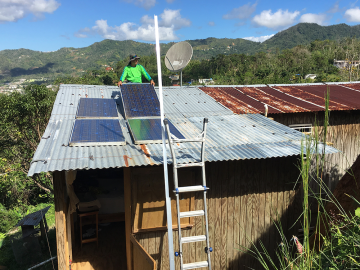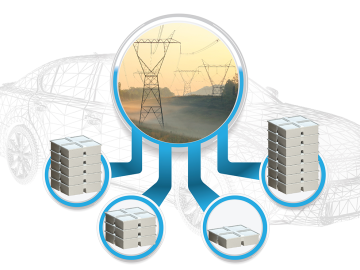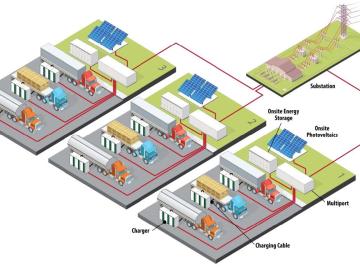
Filter News
Area of Research
- (-) Energy Science (135)
- (-) Neutron Science (34)
- Advanced Manufacturing (5)
- Biology and Environment (37)
- Building Technologies (1)
- Computational Biology (1)
- Computational Engineering (3)
- Computer Science (15)
- Electricity and Smart Grid (3)
- Functional Materials for Energy (1)
- Fusion and Fission (6)
- Fusion Energy (2)
- Isotopes (1)
- Materials (88)
- Materials for Computing (19)
- Mathematics (1)
- National Security (34)
- Nuclear Science and Technology (8)
- Quantum information Science (9)
- Sensors and Controls (1)
- Supercomputing (125)
- Transportation Systems (2)
News Topics
- (-) Composites (18)
- (-) Computer Science (35)
- (-) Grid (39)
- (-) Machine Learning (10)
- (-) Molten Salt (1)
- (-) Physics (10)
- (-) Polymers (12)
- (-) Quantum Science (8)
- (-) Transportation (68)
- 3-D Printing/Advanced Manufacturing (83)
- Advanced Reactors (6)
- Artificial Intelligence (14)
- Big Data (7)
- Bioenergy (31)
- Biology (18)
- Biomedical (20)
- Biotechnology (5)
- Buildings (38)
- Chemical Sciences (17)
- Clean Water (10)
- Coronavirus (22)
- Critical Materials (9)
- Cybersecurity (9)
- Energy Storage (74)
- Environment (59)
- Exascale Computing (2)
- Fossil Energy (3)
- Frontier (3)
- Fusion (2)
- High-Performance Computing (8)
- Hydropower (3)
- Isotopes (1)
- Materials (46)
- Materials Science (48)
- Mathematics (3)
- Mercury (3)
- Microelectronics (1)
- Microscopy (10)
- Nanotechnology (17)
- National Security (7)
- Neutron Science (121)
- Nuclear Energy (9)
- Partnerships (12)
- Quantum Computing (1)
- Security (8)
- Simulation (4)
- Space Exploration (6)
- Statistics (1)
- Summit (9)
Media Contacts

ORNL researchers Ben Ollis and Max Ferrari will be in Adjuntas to join the March 18 festivities but also to hammer out more technical details of their contribution to the project: making the microgrids even more reliable.

When aging vehicle batteries lack the juice to power your car anymore, they may still hold energy. Yet it’s tough to find new uses for lithium-ion batteries with different makers, ages and sizes. A solution is urgently needed because battery recycling options are scarce.

Seven scientists at the Department of Energy’s Oak Ridge National Laboratory have been named Battelle Distinguished Inventors, in recognition of their obtaining 14 or more patents during their careers at the lab.

The presence of minerals called ash in plants makes little difference to the fitness of new naturally derived compound materials designed for additive manufacturing, an Oak Ridge National Laboratory-led team found.

Researchers at Oak Ridge National Laboratory have designed architecture, software and control strategies for a futuristic EV truck stop that can draw megawatts of power and reduce carbon emissions.

Although blockchain is best known for securing digital currency payments, researchers at the Department of Energy’s Oak Ridge National Laboratory are using it to track a different kind of exchange: It’s the first time blockchain has ever been used to validate communication among devices on the electric grid.

Oak Ridge National Laboratory scientists designed a recyclable polymer for carbon-fiber composites to enable circular manufacturing of parts that boost energy efficiency in automotive, wind power and aerospace applications.

As the United States shifts away from fossil-fuel-burning cars and trucks, scientists at the Department of Energy’s Oak Ridge and Argonne national laboratories are exploring options for another form of transportation: trains. The research focuses on zero-carbon hydrogen and other low-carbon fuels as viable alternatives to diesel for the rail industry.

Laboratory Director Thomas Zacharia presented five Director’s Awards during Saturday night's annual Awards Night event hosted by UT-Battelle, which manages ORNL for the Department of Energy.

Researchers at ORNL recently demonstrated a new technology to better control how power flows to and from commercial buildings equipped with solar, wind or other renewable energy generation.


